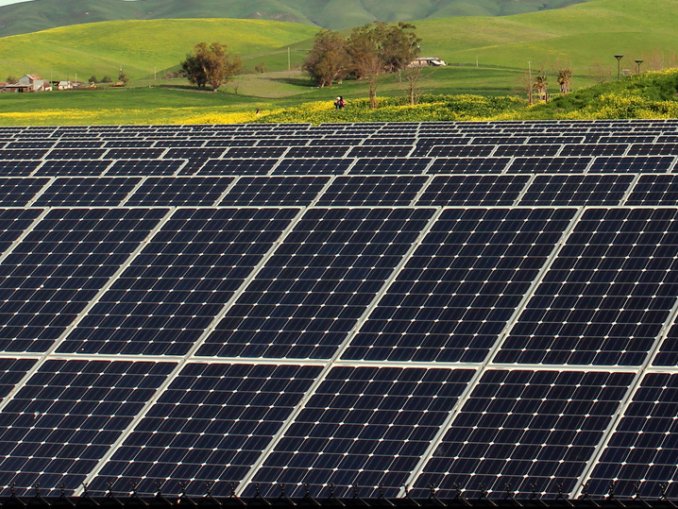It’s true that ‘photovoltaic solar panels’ can sound a little intimidating.
After all, those nine syllables are quite a mouthful and “photovoltaic” sounds like some sort of alien race you would find in an episode of Star Trek.
It should comfort you to learn, therefore, that there is really nothing to fear when it comes to learning the basics of photovoltaic panels. The idea behind these technological marvels is actually quite simple.
The important thing to remember is that when a person talks about “photovoltaics” (“PV” for short), they are simply referring to solar electric panels. These are the same panels you have probably seen on many rooftops in your neighborhood.
So if we’re just talking about solar panels, why confuse everyone with a tongue twister like photovoltaic?
Well first you should know that a solar panel is made up of many solar cells that are wired together. Another name for these solar cells is photovoltaic cells.
According to the good folks who know what words mean, these PV cells get their name from the fact that they convert light (photo) into electricity (volts are a measure of electricity).
If you get to know a little about the history of solar panels you will see that this “photovoltaic effect” was discovered way back in 1839 by the awesomely named Alexandre-Edmond Becquerel. This discovery was a pretty big deal because it proved that a solid object with no moving parts could create electricity with only sunlight as a fuel.
Although very little power would be achieved through this photovoltaic effect until many years later, the discovery would provide the foundation for the eventual emergence of solar power as a renewable energy source to be reckoned with. Just think of all the solar energy companies that exist today because of the discovery of PV.
This little history lesson on photovoltaic solar panels also serves to remind us of the elegant simplicity behind solar power itself: It takes the light of the sun and turns it into electricity. It accomplishes this without bells or whistles or any moving parts to speak of.
This ‘magical’ quality of solar electricity is part of what draws so many people to the solar industry in the hopes of using Mr. Golden Sun’s abundant resources to change our future here on Earth.

Think about it this way: According to the Union of Concerned Scientists “All the energy stored in Earth’s reserves of coal, oil, and natural gas is matched by the energy from just 20 days of sunshine”. This provides an idea of how drastically our energy situation could change if we harnessed more of the sun’s bountiful energy.
It is also important to remember that PV or solar electric panels are different from solar hot water panels and use a completely different technology.
Photovoltaic solar panels take the sun’s light and convert it directly into electricity while a solar hot water installation converts the sun’s energy into heat and uses it to provide hot water for bathing and household chores like washing the dishes.
As for how PV panels accomplish their magical feat of converting light to electricity, the simple answer is that it involves the excitement of electrons. When electrons within the solar cells are excited by the energy of the sun they are harnessed to create an electric current that can be put to work powering our computers or lighting up our homes.
Silicon is the material that is used in many solar cells since the wavelength of visible light is very effective at exciting it’s electrons.
As the cost of solar panels continues to fall, making PV panels a part of our life becomes more realistic all the time. Perhaps it won’t be long until seeing photovoltaic solar panels on our neighbor’s roofs will become the new normal.
